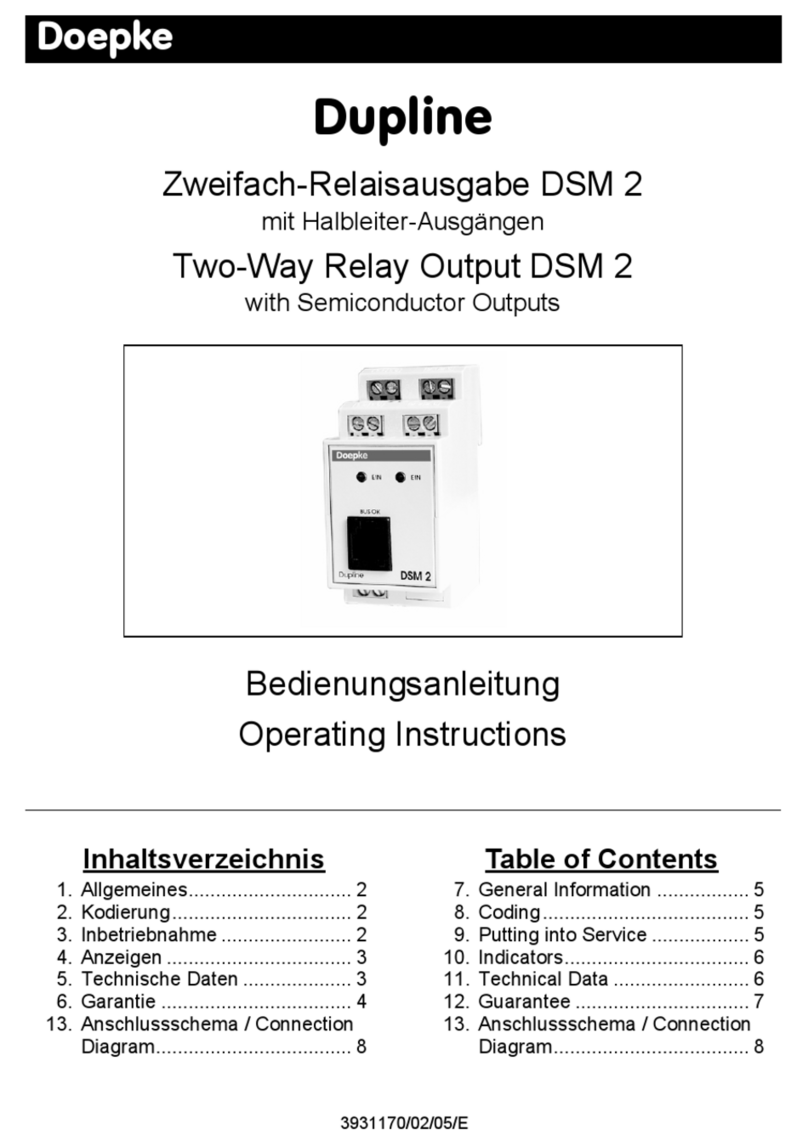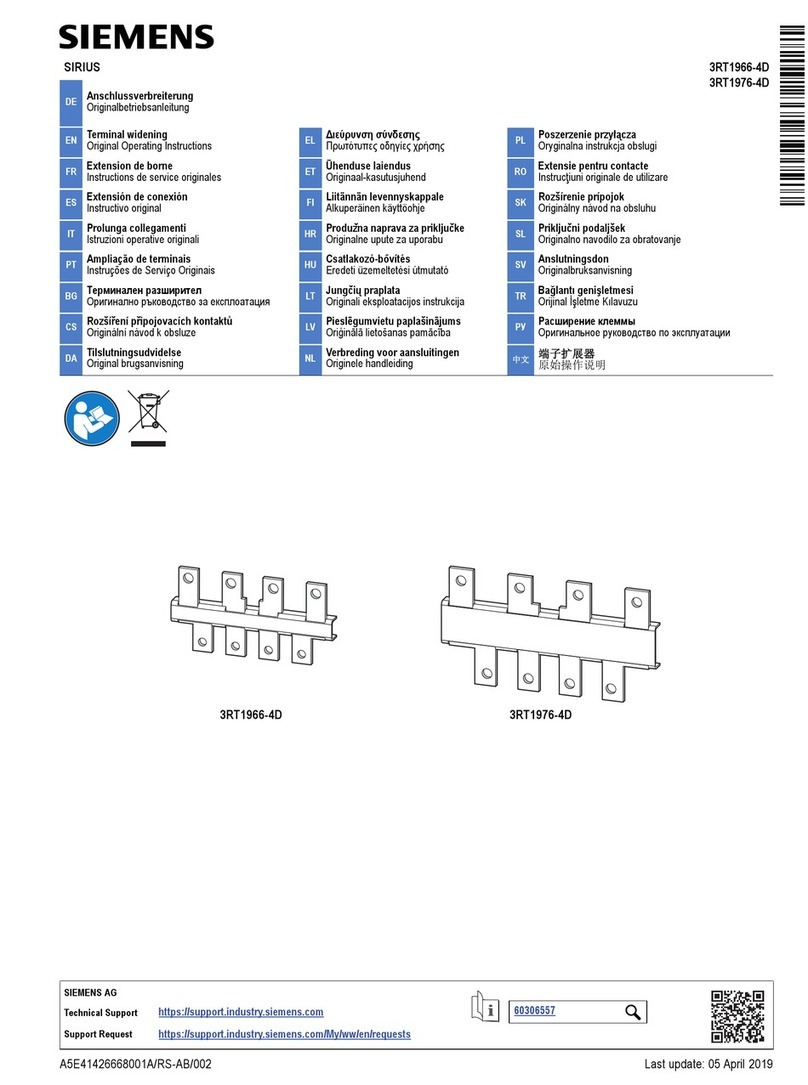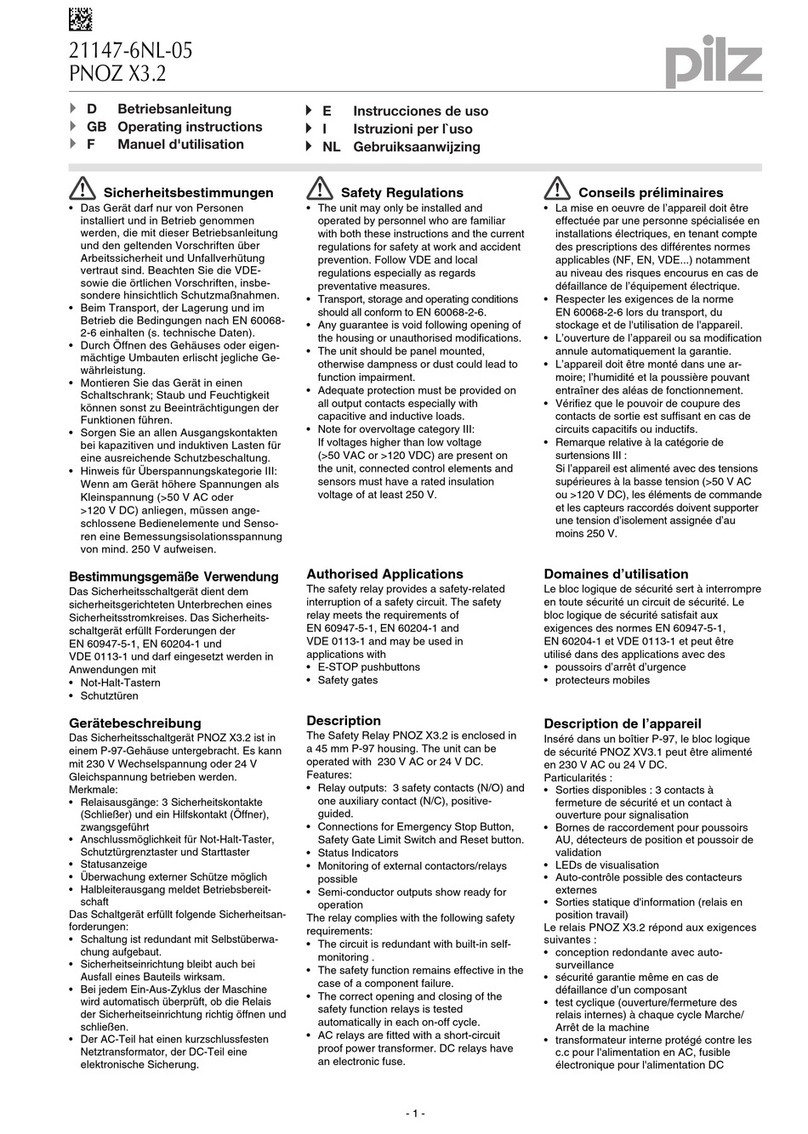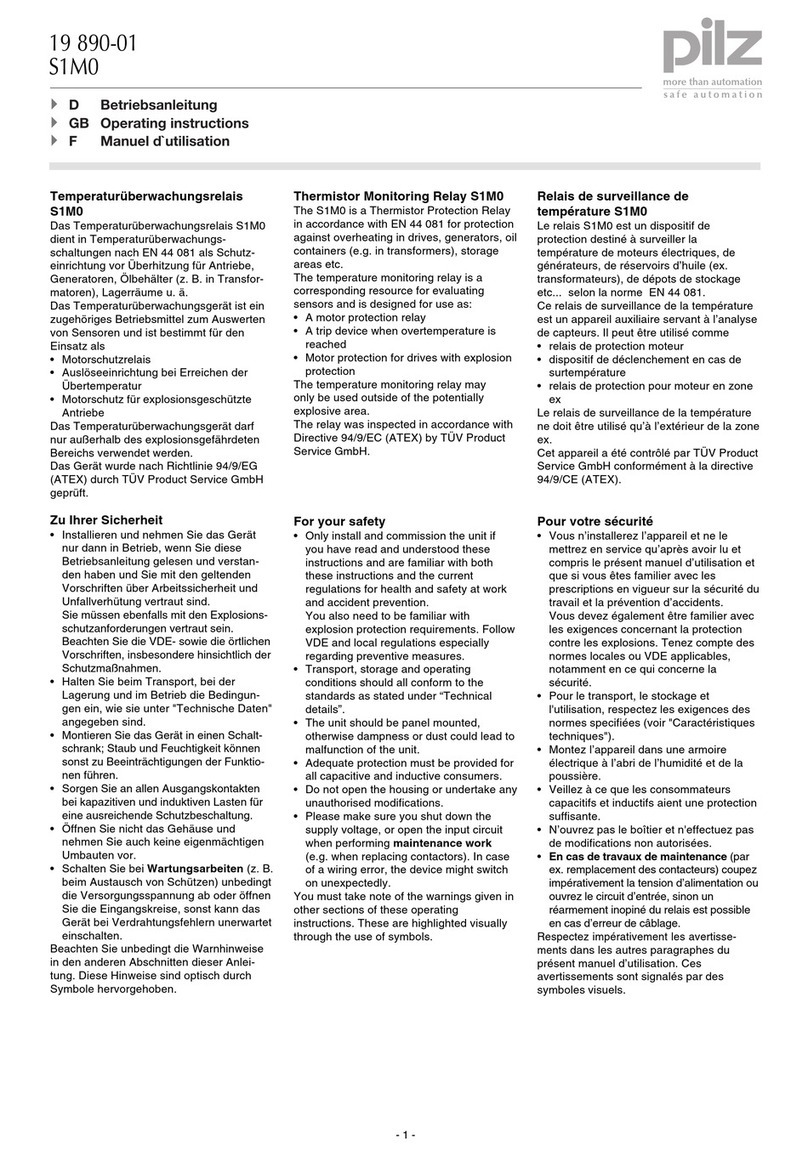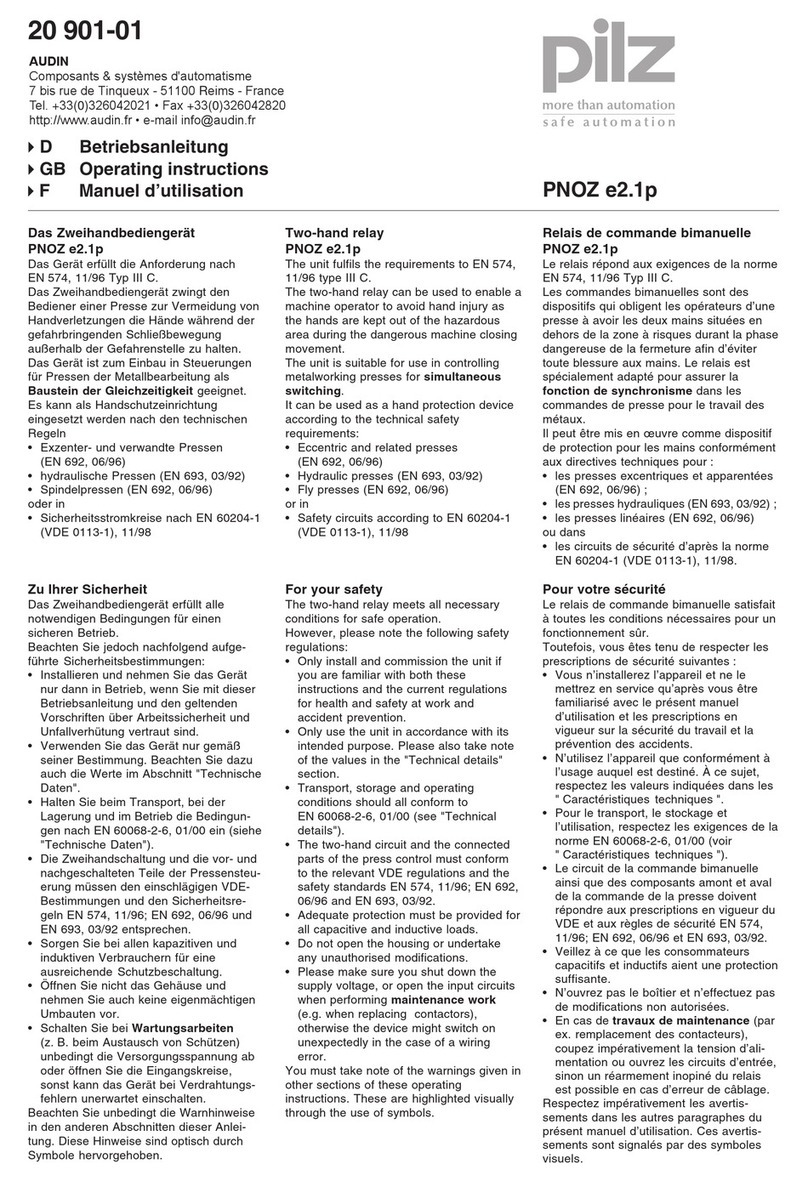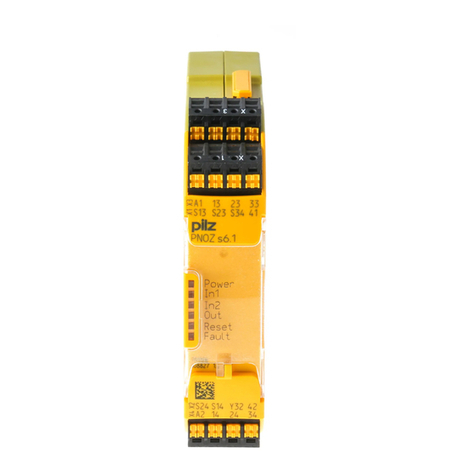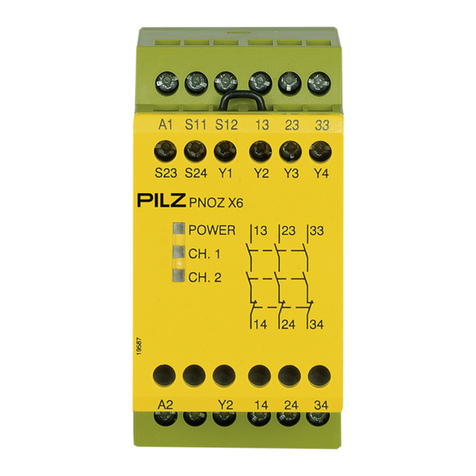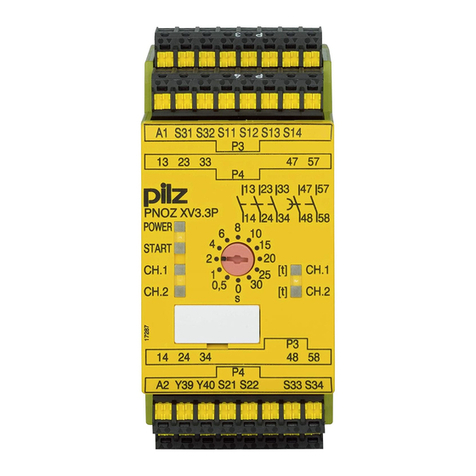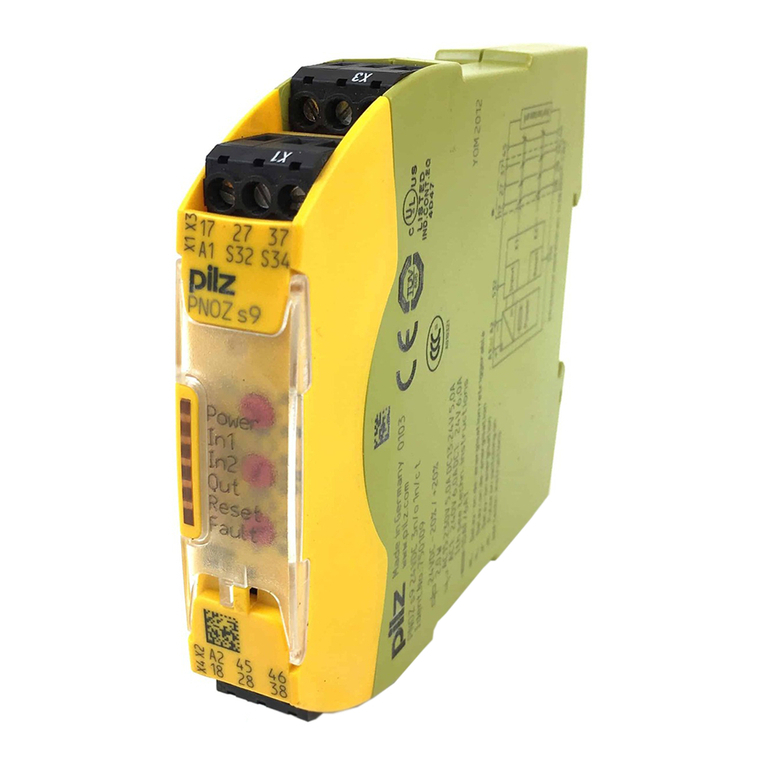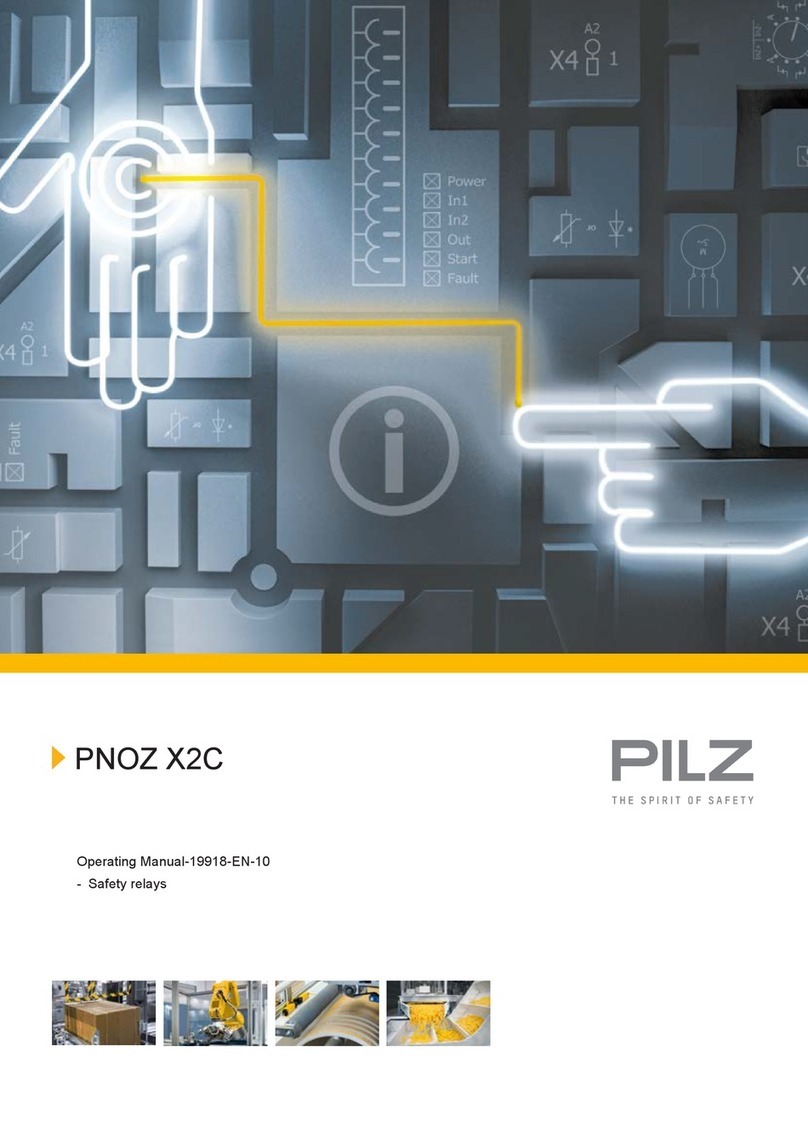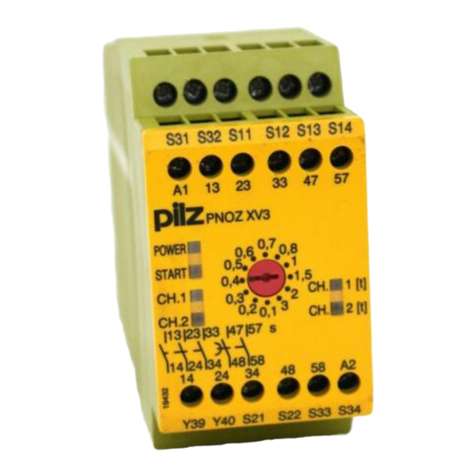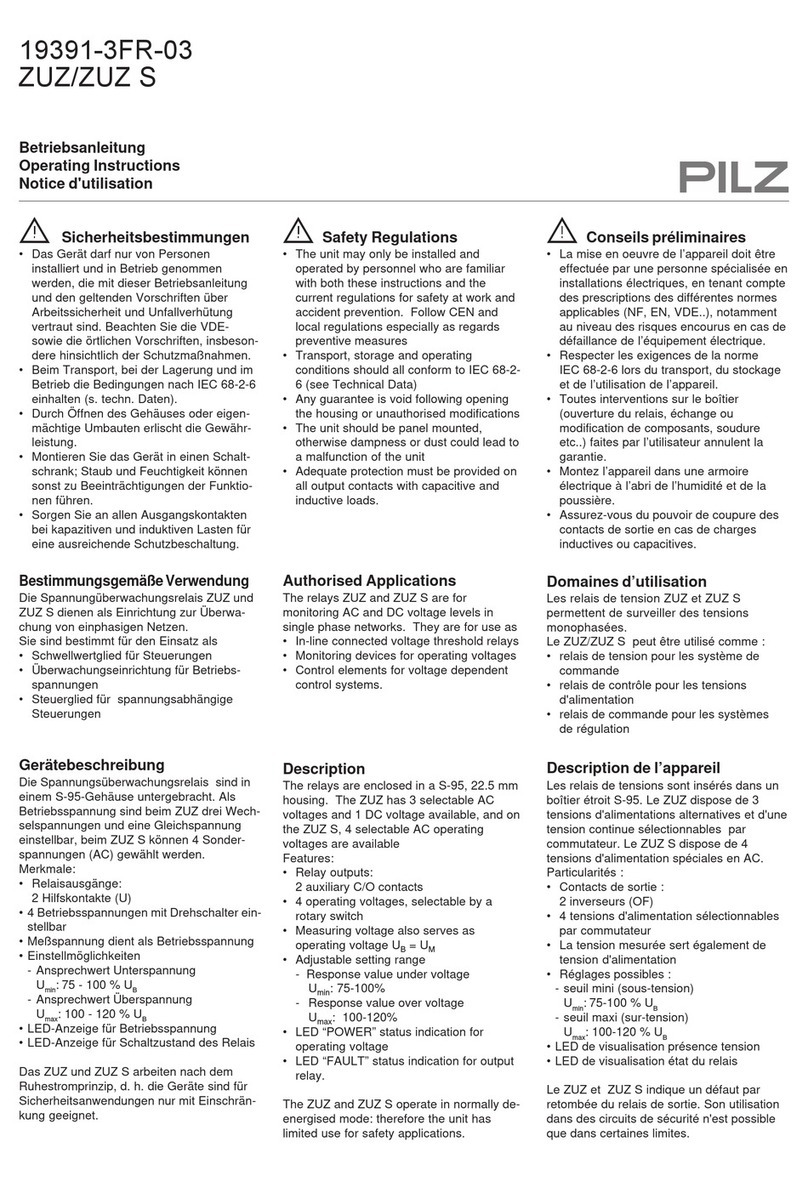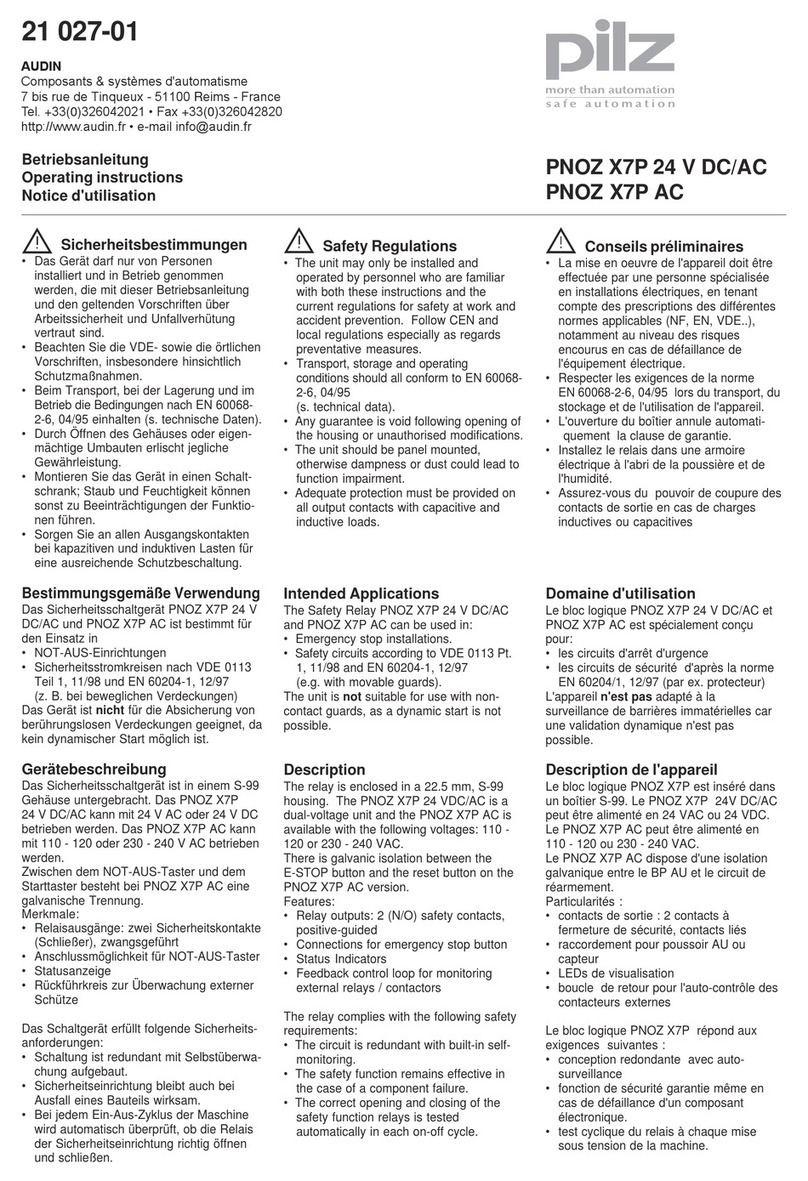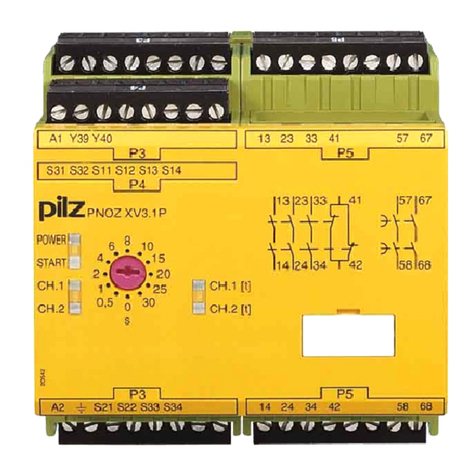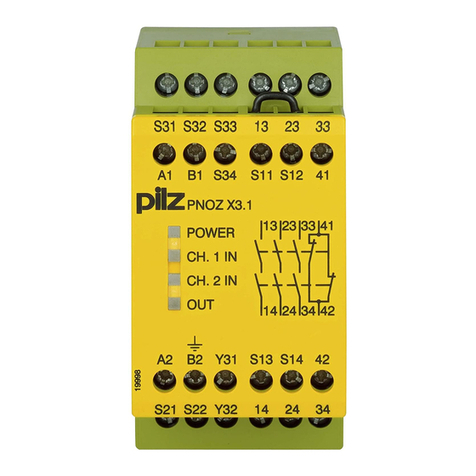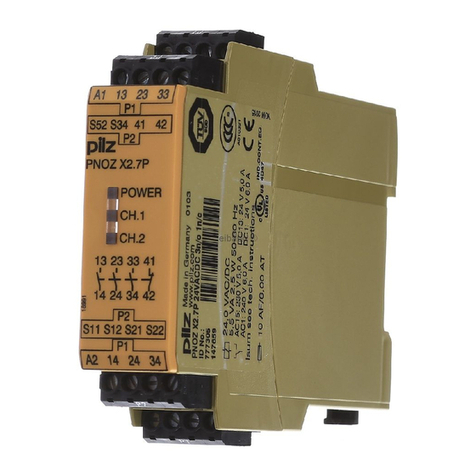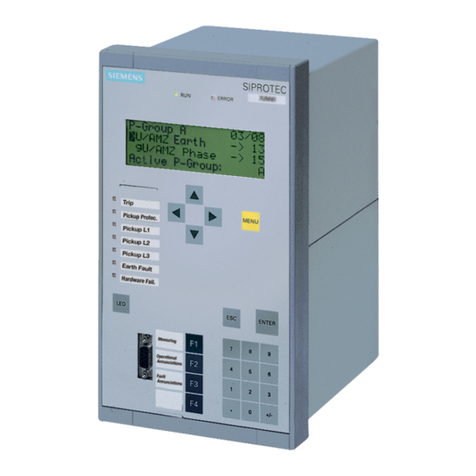
- 9 -
Prescripciones de seguridad
• El dispositivo tiene que ser instalado y
puesto en funcionamiento exclusivamente
por personas que estén familiarizadas
tanto con estas instrucciones de uso
como con las prescripciones vigentes
relativas a la seguridad en el trabajo y a
la prevención de accidentes. Hay que
observar tanto las prescripciones VDE
como las prescripciones locales,
especialmente en lo que se refiere a las
medidas de protección.
• Durante el transporte, el almacenaje y el
funcionamiento hay que atenerse a las
condiciones conforme a EN 60068-2-6,
01/00 (ver datos técnicos). Una vez
finalizado su tiempo de vida útil, hay que
eliminar el dispositivo de forma
apropiada.
• La garantía se pierde en caso de que se
abra la carcasa o se lleven a cabo remo-
delaciones por cuenta propia.
• Montar el dispositivo dentro de un
armario de distribución; en caso contrario
es posible que el polvo y la suciedad
puedan afectar el funcionamiento.
• Hay que cuidar de que haya un
conexionado de seguridad suficiente en
todos los contactos de salida con cargas
capacitivas e inductivas.
• Sólo se permite conectar el dispositivo
exclusivamente como en los ejemplos de
conexión del capítulo “Aplicación”.
Campo de aplicación adecuado
El dispositivo satisface los requerimientos
del tipo III A según EN 574.
¡ATENCION!
El P1HZ 2 no debe ser utilizado en
controles de prensas. Para ello
recomendamos los relés de manejo a dos
manos P2HZ 5 y P2HZ 6. Es adecuado sólo
para su aplicación en una peligrosidad
menor, determinada por un análisis de
riesgos (p.ej. DIN EN 954-1 cat. B o bien
1, 03/97). El relé de manejo a dos manos
P1HZ 2 sirve como dispositivo de protección
manual del tipo IIIA según EN 574 en
máquinas o instalaciones. El dispositivo
obliga al operario a mantener las manos
fuera de la zona de peligro mientras que
tienen lugar los movimientos peligrosos. El
P1HZ 2 está concebido para su utilización
en dispositivos de a dos manos. Hay que
observar la indicación de tipo del dispositivo
de a dos manos de la norma C
correspondiente.
Descripción del dispositivo
El relé de manejo a dos manos se
encuentra dentro de una carcasa P-75.
Existen diversas variantes disponibles para
el funcionamiento con tensión alterna y una
variante para el funcionamiento con tensión
continua de 24 V.
Norme di sicurezza
• Il dispositivo può venire installato e
messo in funzione solo da persone che
conoscono bene le presenti istruzioni per
l’uso e le disposizioni vigenti relative alla
sicurezza di lavoro e all’antinfortunistica.
Osservare le disposizioni della VDE
(Associazione tedesca degli Ingegneri)
nonché le norme locali, soprattutto per
quanto riguarda le misure preventive di
protezione.
• Durante il trasporto, l’immagazzinamento
e il funzionamento attenersi alle
condizioni prescritte dalla norma EN
60068-2-6, 01/00 (v. Dati tecnici). Al
termine della propria durata, smaltire il
dispositivo in conformità alle norme
vigenti.
• Se viene aperto l’alloggiamento oppure
se vengono apportate delle modifiche in
proprio decade qualsiasi diritto di
garanzia.
• Montare il dispositivo in un armadio
elettrico; altrimenti la polvere e l’umidità
possono pregiudicare le funzioni.
• Occorre dotare tutti i contatti di uscita dei
carichi capacitivi e induttivi con un
cablaggio protettivo sufficiente.
• Il dispositivo può essere collegato solo
come indicato negli esempi di
connessione al capitolo “Utilizzo”.
Uso previsto
Il dispositivo risponde al requisito di Tipo III
A della norma EN 574.
ATTENZIONE!
Il P1HZ 2 non è adattato ai circuiti di
comando delle presse. In questo caso si
consiglia l’utilizzo dei relè a comando
bimanuale P2HZ 5 e P2HZ 6. Esso è
progettato solo per l’utilizzo in circuiti la cui
categoria di rischio è limitata
(p. es. EN 954-1 cat. B o 1, 03/97).
Il relè a comando bimanuale P1HZ 2 è un
dispositivo di protezione per le mani di tipo
IIIA secondo la norma EN 574 su macchine
o impianti. Esso costringe l’operatore a
tenere le proprie mani fuori dall’area di
pericolo della macchina durante movimenti
rischiosi.
Il P1HZ 2 è destinato esclusivamente
all’impiego come relè di comando
bimanuale. Verificare il tipo di comando
bimanuale da installare in base alla relativa
norma C.
Descrizione
Il relè di comando bimanuale è inserito in un
alloggiamento P-75. Per il funzionamento a
corrente alternata sono disponibili diverse
varianti ed una variante per il
funzionamento
con corrente continua (24 V).
Veiligheidsvoorschriften
• Het apparaat mag uitsluitend worden
geïnstalleerd en in bedrijf genomen door
personen die vertrouwd zijn met deze
gebruiksaanwijzing en met de geldende
voorschriften op het gebied van
arbeidsveiligheid en ongevallenpreventie.
Neem de VDE-voorschriften alsmede de
plaatselijke voorschriften in acht, in het
bijzonder m.b.t. de veiligheidsregels.
• Neem bij transport, opslag en in bedrijf de
richtlijnen volgens EN 60068-2-6, 01/00 in
acht (zie technische gegevens). Het
apparaat na afloop van zijn levensduur op
de juiste wijze verwijderen en opslaan.
• Het openen van de behuizing of het
eigenmachtig aanpassen heeft verlies van
de garantie tot gevolg.
• Monteer het apparaat in een schakelkast.
Stof en vocht kunnen anders de werking
nadelig beïnvloeden.
• Zorg bij alle uitgangscontacten bij
capacitieve en inductieve belastingen
voor voldoende beschermbedrading.
• Het apparaat mag alleen worden
aangesloten zoals in de aansluitvoor-
beelden in het hoofdstuk “Toepassing” is
beschreven.
Gebruik volgens de
voorschriften
Het apparaat vervult de bijzondere eis
type III A volgens EN 574.
ATTENTIE!
Het P1HZ 2 mag niet bij persbesturingen
worden ingezet. Hiervoor adviseren wij de
tweehandenbedieningsrelais P2HZ 5 en
P2HZ 6. Het is alleen geschikt voor het
gebruik bij een gevaarlijke situatie die door
de risicoanalyse is bepaald (bijv. DIN
EN 954-1 cat. B of 1, 03/97).
Het tweehandenbedieningsrelais P1HZ 2
wordt gebruikt als handbescherming type
IIIA volgens EN 574 bij machines resp.
installaties. Het apparaat dwingt de
gebruiker om zijn handen tijdens gevaarlijke
bewegingen buiten de gevarenzone te
houden.
Het P1HZ 2 is bedoeld voor het gebruik in
tweehandenschakelingen. Neem daarbij de
typeaanduiding van de tweehanden-
schakeling uit de desbetreffende C-norm in
acht.
Apparaatbeschrijving
Het tweehandenbedieningsrelais is
ondergebracht in een P-75-behuizing.
Verschillende varianten voor de werking met
wisselspanning en een variant voor de
werking met 24 V gelijkspanning zijn
beschikbaar.
17 554-01
P1HZ 2 (Tipo / Type III A, EN 574)
4E Instrucciones de uso
4I Istruzioni per l`uso
4NL Gebruiksaanwi zing




